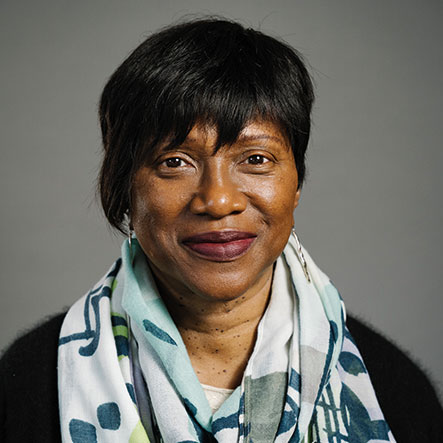Get that grant! How to add some bang to your bids
Funders receive tens, if not hundreds, of applications – how can you make yours stand out? We asked some of our experienced fundraising consultants for their tips on putting together winning bids.
Sean Tully
- 1. In my experience, there are three ways to make your application stand out: i) send an ineligible application; ii) give them a strong project with everything they ask for; iii) have a personal connection with a key person at the Trust.
- 2. People give to people, even in grants fundraising. But a personal connection with a key person at a grant-making trust will not be possible in >90% of funding applications, so you have to build trust by showing your competence and credibility.
- 3. Relationships underpin fundraising. Trust underpins relationships. Competence and Credibility underpin trust.
a. You need to show funders and donors that you are competent (having the necessary ability, knowledge, or skill to do something successfully).
b. These things will make you credible (able to be believed; convincing - capable of persuading people that something will happen or be successful).
- 4. When you’ve seen one grant-making trust, you’ve seen… one grant-making trust. That said, they all, without exception, expect – and deserve – a speedy “thank you” when they fund you.
Naomi Buckler
My top tip is to give your application to someone who doesn't know anything about it (the same position as the person judging your application), and ask them to mark it out of five in various areas, for example:
- How well does it offer value for money?
- How successfully does it demonstrate need? Is there good evidence provided?
- How well has the project been researched? Have alternative solutions been investigated?
- To what extent does the application show that finances and outcomes will be carefully monitored?
- Is the budget realistic? Is the applicant committing its own time and resources to the project?
(You can tweak these prompts based on what the funder says they are looking for.)
If your application scores less than five in any area, then see how you can improve your rating in that area.
Andrew Rainsford
- In a previous life I have been a grant assessor. All schemes were oversubscribed so we had to take a firm view. Because we had limited time to read applications we often specified both the number of pages and minimum font size. This was not because we were awkward. It was because we had a lot to read. If font sizes were small we found them difficult. If there was too much information we could not assimilate it all.
On one occasion we totted up the requests and found that we were oversubscribed by a factor of 30. We had specified 14 pages so the first sift was nothing more than counting pages. 15 or more meant that we did not even read the application. How many good projects did we not fund? Was one of them yours? Sorry – but not sorry.
- Be realistic – schemes that can award £2million have to do exactly the same amount of work for a £20k application as they do for a £2m application. The scheme that I have in mind has the final application window closing in mid-June. Each application has a potential 11,000 words and will require a full business plan, three years forward projections, copious numbers of supporting letters and evidence of risk management being embedded in the applicant. Is it really worth it for a £20k whatever? Likewise, don't ask a small trust for massive sums. The size of a charitable trust can be found in two clicks and typing the name into the Charity Commission website.
Amanda Price
- At every bid writing workshop I ever attended early in my career, the speaker would say one should always, no matter what, ring the Trust in the early stages. They would say that it doesn’t matter if you don’t really need to ask them anything, you should still ring to “start the process of a relationship”.
Experience has taught me that I don’t agree with this. If there is a reason to ring, then great – it’s a chance to plant your charity’s name in their mind and to get a useful steer on where to focus the application. However, some funders are short on staff and Trustees and are doing this work in their spare time. They don’t necessarily welcome a conversation, so I just wouldn’t ring a funder unless I really had a valid reason.
Instead I often email the Trust person in advance to give a quick, friendly introduction to the charity and a check on whether they’re receiving unsolicited applications at the moment, or if they have an impending deadline which I can’t see online, etc. This approach very often gets a response and opens up the potential for further correspondence.
- Pick out the interests and criteria of the funder that ‘fit’ with the charity’s focus and allude to these in the application heading. For example, if the Trust’s focus is on young people living in Exeter, mention that they would be supporting young people in Exeter in the heading. Then use the same heading for the cover letter to provide reference and consistency. Obviously, I would only do this if the words I’m using genuinely fit with the charity’s purpose, but if you do have shared focus points, alluding to them straight away will help you to stand out.
Lucretia Hudson-Garber
- Get to know the funder as well as you know your charity. Do your research. Check the website and charity commission entry. The Annual Report/Accounts will give an insight to grant ranges and funding preferences. It’s important to be clear about the funding criteria/eligibility, what they will fund, grant range, application process, deadlines etc. Determine what form the bid should take – 2- or 4-page narrative; online application, email or post it?
- For narrative bids (where there is no application form), use a format that is easy to read. Keep it concise but informative. I use a standard format of clear, specific headings to ensure that key areas are covered. I’ll add other headings depending on the funder’s requirements. Photos, tables and quote boxes can be good to break up narrative bids and make them more interesting to the funder. Stick to to to four pages unless told otherwise.
Carol Ward
- Make sure you have a robust and inspirational Case for Support. This document will contain everything there is to know about your project, including the cost, a fundraising plan outlining the funding streams you feel are best suited to the project (individual givers, grants and trusts, community etc) and any funds you are committing or have raised so far. It’s a dynamic document to be altered as plans change or when funds are received. It can be used in a variety of ways, including writing funding applications.
- Work smart. Where a funder clearly states what they require, make sure you follow their instructions. Use each of their listed requirements as headings for the information you provide. This will make it easier for anyone reading the application to see that you have given them everything they need.
Derek Smith
- Consider what is required from the answer. Add the rider “and is it effective?” to the question, eg “How do you involve service users – and is it effective?” This will focus answers on outcomes and evidence.
- Write in the active voice rather than the passive voice. It is client focussed, more evidence based, more readable and mostly uses fewer words.
- Poorly written sentences are often ignored. Turn on Google readability in Word to obtain a readability score. Short sentences, short words and avoiding the passive tense improve readability.
Catherine Chin
- Read the grant guidelines and always ensure that they match your funding needs. Beware of making your project/funding need fit grantmakers’ priorities. Be true to your ambitions.
- The best success is often endorsed by a strong relationship with the grantmaker’s team, which is usually developed over time. The best scenario is when a grantmaker not only coaches and guides the fundraiser on what the Trustees are looking for, but may review your bid with constructive feedback.
Action Planning consultants can help you with bid writing, either by offering advice on appropriate funders or by actually writing the bids. Find out more by calling 01737 814758 or emailing office@actionplanning.co.uk

Bid Writing Service
ARE YOU HELD BACK FROM ACCESSING FUNDING OPPORTUNITIES?
The process of researching and submitting bids to lottery distributors, trusts and statutory bodies can be complex, and time consuming. We help organisations prepare and submit funding bids by relieving them of much of the time-consuming process, and applying our experience of preparing bids that are tailored to match all the funders’ criteria.
Our bid writers have all achieved significant fundraising success and know how to present any not-for-profit organisation and its projects in the best light to increase the chances of a positive response. We will research the funding opportunities available and then write the bid from scratch, or review the organisation’s own draft bid, to ensure that it has the best chance of success before being submitted.
Get in touch
Do you want to hear more about our Bid Writing services? Leave your details below and we'll be in touch.









